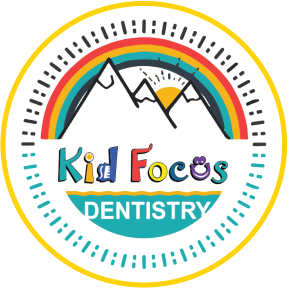Numbness
The number one complication that we have with young children, during and after getting work done, is when your child has to be numb for certain procedures. Most of these complications can be prevented with the help of parents:
Is your child biting his/her lips or cheeks?
When your child is numb, they cannot feel the pain of bites on their lips and cheek. This can happen very quickly, so we ask all guardians who take care of the child post the numbing treatment, to be vigilant in watching for signs of chewing or biting. Do not let your child eat anything that requires chewing until the area has woken up.
- Cheek stickers prevent the child from biting their cheek (see below).
- Remind the child to stop, or do the “Blowfish.”
- Numbness usually lasts about 1-2 hours, all depending on your child. The best indication of the numbness going away is when the area becomes itchy!
If your child did bite their lips/cheek, it will become swollen very quickly. Later, the area may also become a whitish color. Many times, parents have mistaken this for infections or an allergic reaction. Due to a large amount of fluid in the oral cavities, swelling is a normal reaction. Once trauma occurs to the soft tissues, the only true treatment is to allow the mouth to heal naturally.
- You can help with the pain by giving your child Motrin/Tylenol throughout the day.
- I find that Canker-Rid (Amazon) can help shorten the time of healing.
Does your child hate the feeling of being numb?
Sometimes they mistake numbness for pain. It is a difficult sensation to comprehend for most people, especially for children. The best way to curb this is to explain to your child that: “It feels weird because the tooth is asleep, but that will go away when it wakes up!”
Other tricks are:
- Drinking or sucking on cold things (i.e. ice-cream/smoothie/popsicle). Avoid hot things because this can burn the child since they cannot sense heat when being numb.
- Giving your child Motrin/Tylenol to curb some sensations.
- Encourage your child to go down for a nap.
Cheek stickers help prevent biting
Patients whose mouths are numbed during treatment tend to play with the numb area by chewing or biting on it. This can produce soreness and swelling on the child’s cheeks. To prevent injury to the tissue, we encourage the use of a “cheek sticker,” which we provide after treatment as an additional method to prevent biting on the cheek.
- Has silver foil on one side and white on the other.
- The parent should place the white side on the numbed cheek.
- Once placed, due to its absorbency, the sticker will adhere to the cheek.
- Since the cheek sticker may be a little uncomfortable, we suggest parents only use it if they see their child playing with the numb area.
- To remove the cheek sticker, have the child swish their mouth with water until the cheek sticker softens and slides off the cheek. Then spit it out.


